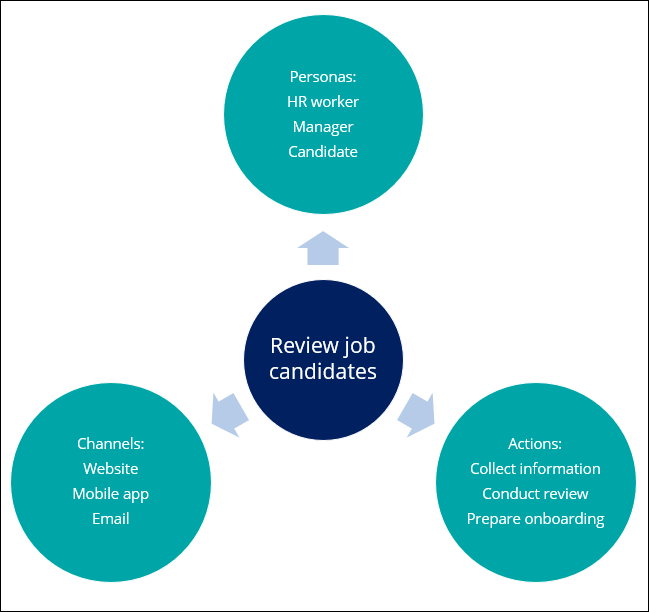Identifying people involved in case types
Along with actions and data, people involved in your business process are a key element in achieving your goals. Before you start modeling and automating your work with the tools that Pega Platform offers, define the people that you need to engage in your business process, what actions they need to perform, and what device they might use to interact with your application.
When you define the participants in your business process, answering the following questions might be helpful:
Who do I need to involve?
Before you model your business process, think about the types of users that you intend to reach with your application. To determine what user types you need to create, consider what the specific goals and actions are for each type. For example, in a loan request review process, a customer service representative (CSR) has a different objective and tasks from a manager. While a goal for a CSR could be to collect income information from a customer, a manager might need to either approve or reject the customer's request. However, all CSRs that perform work in your application share one set of tasks, and as a result, form one user type. Pega Platform refers to user types as personas. By defining personas, you can analyze and determine what kind of information the members of each user type need to access, and what actions they need to complete. Consequently, you ensure that you build and configure an application that is relevant to all of the types of users involved in your business process.What actions do users need to perform?
When you identify personas in your business process, analyze what actions each persona might need to perform. For example, in a loan request process, a CSR might need to review the customer's creditworthiness and income information, and a manager might need to review that information and then approve or reject the loan request. At this point, you can also identify the data that these users need to complete their tasks. Consider also how user actions interact with each other. For example, how the manager's decision affects the process, or how your application needs to assign tasks to users. After you define all of the actions in your business process, you can use Pega Platform to visualize, model, and automate your work. As a result, you can create an application that precisely reflects your business process. Pega Platform also offers tools that you can use to dynamically adjust actions to your changing requirements. For example, a user might perform an action only when it is relevant to a specific case, such as a CSR who reviews a loan request only if a customer's income is higher than a specified amount.How will users interact with my application?
After you define the personas in your business process and what actions they need to perform, think about the device that is the most efficient and relevant solution in various scenarios. Consider whether users will need to interact with your application through a website, a mobile app, or by email. For example, customers can access an application for filling in loan requests through a browser-based web channel, or through a mobile channel that relies on a mobile app. In addition, you can also build a Facebook chatbot for customers who want to ask questions about their requests. At the same time, you can set up a second, more utilitarian web channel to accommodate professional users, such as CSRs. By making the application accessible over several channels, you can reach a wide variety of audiences, and provide each user group with the most appropriate content and user experience.The following figure shows a diagram that includes basic elements of an application to review job candidates. The diagram includes personas involved in the process, main actions in the process, and interactive channels that personas can use:

What to do next: After you define the crucial elements of your business processes, start modeling and visualizing your work. See Building case types.
Previous topic Understanding case hierarchy Next topic Building case types
